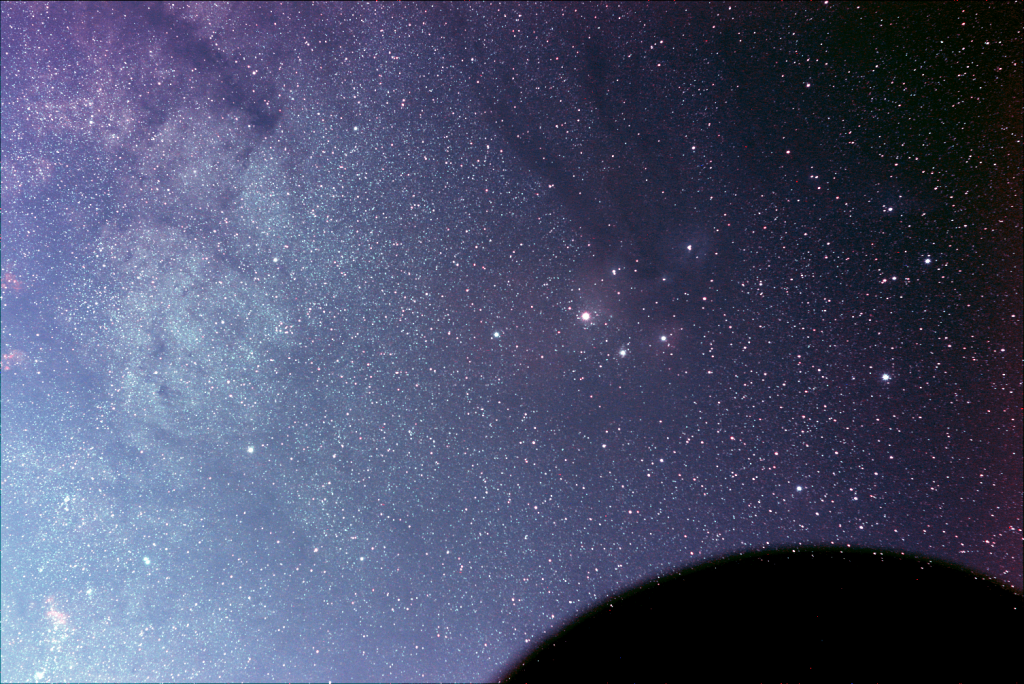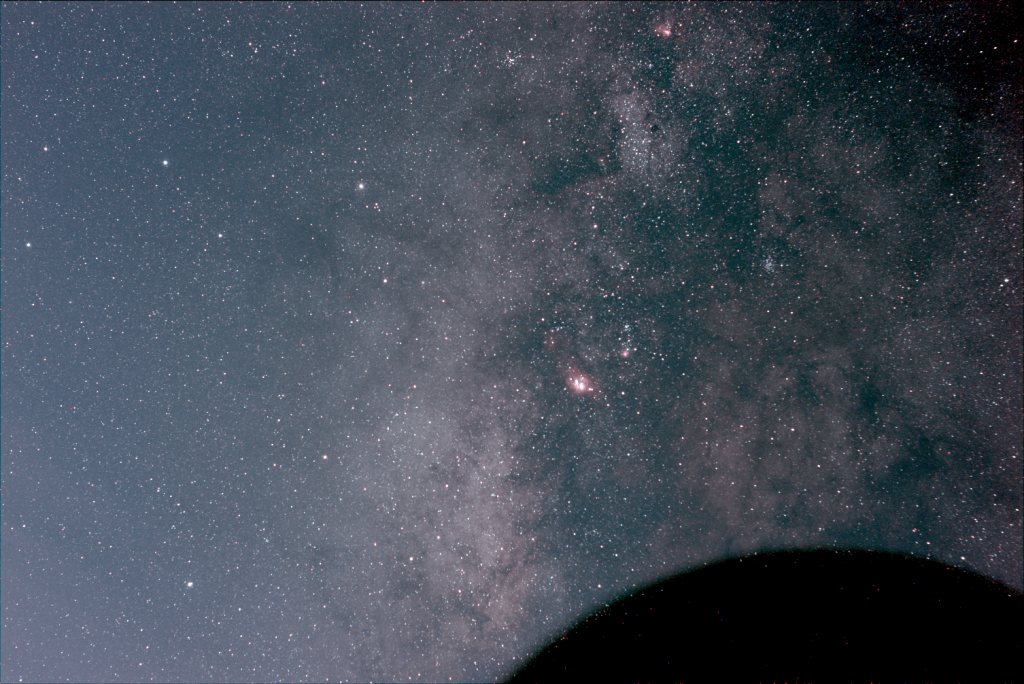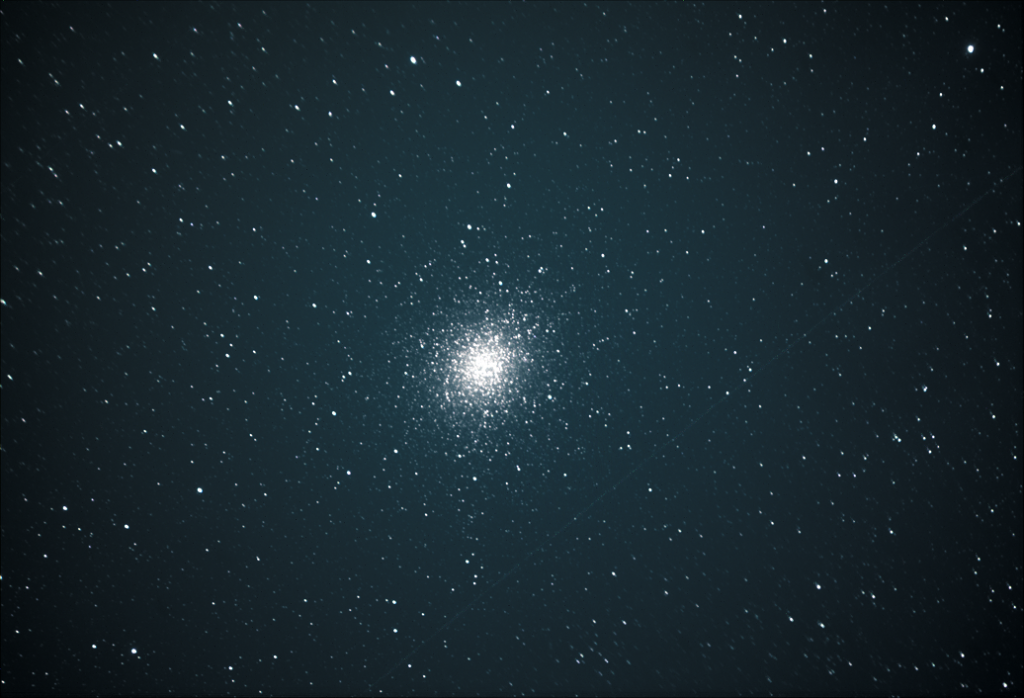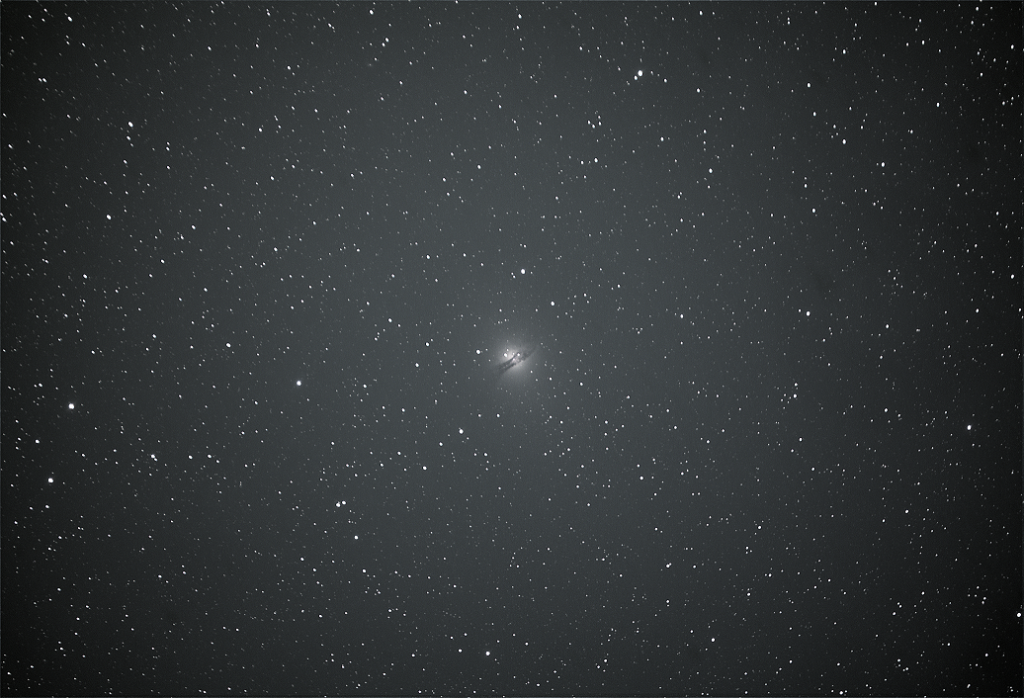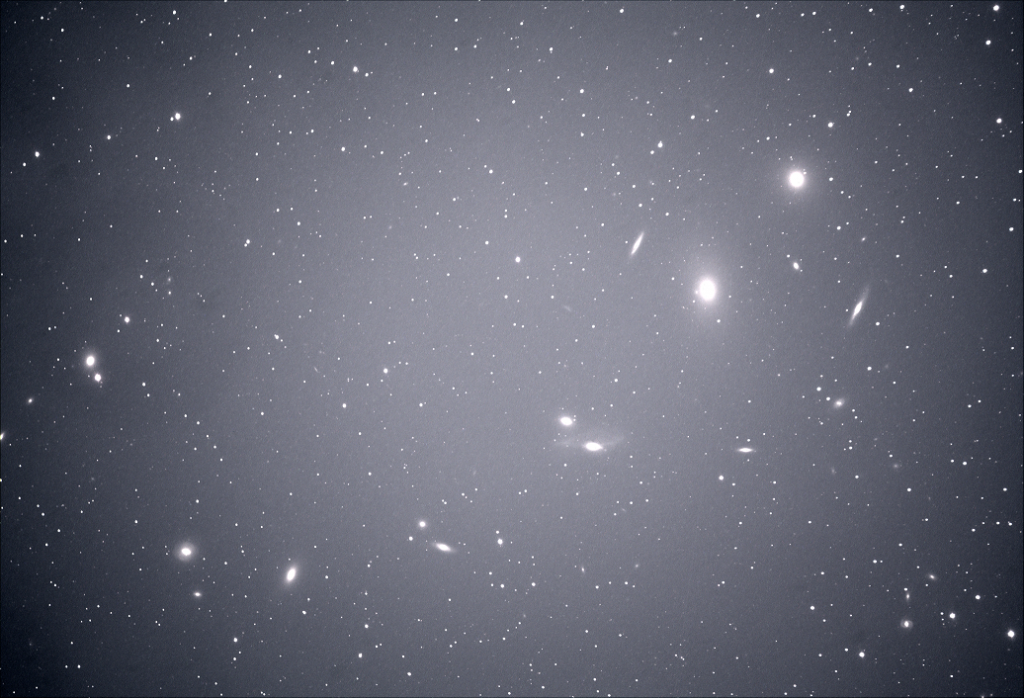I got up at 3:30 and decided to pursue the new Comet NEOWISE aka C/2020 F3). I remembered that the nature trail behind Audubon Arkansas has a hill with a nice view and would be accessible. I decided to ask forgiveness later as no permission would be forthcoming at 3:30 AM. My images aren’t as good as many you have already seen but here we have 28 frames at 3 per second. Each was 4.3 seconds long with my 50mm f/1.8 lens at ISO 800. The star at the top is Menkalinan, the one at the right Mahasim. The comet was visible to the unaided eye once located with binoculars and the tail was about 1.5 degrees long in my 10×42 binoculars.
6/24/2020 First Light with Hyperstar
I had my first chance to try out my new Hyperstar V4 with my 11″ Celestron SCT (Elf). With this configuration, Elf becomes an 11″ f/1.9 lens with a focal length of 532mm.
This was not a night for long integrations. It was just a shake down cruise. Below are some images of, top to bottom, Omega Centauri, Centaurus A, and Markarian’s Chain. In this configuration, the camera has a 2 degrees by 1.4 degrees. Each of these images are 50 sixteen second images combined. Minor stretching was done but no other post processing. I want you to see it almost as it came out of the camera. Click for a larger view.
The greated globular cluster of them all, Omega Centauri was 9 degrees above the horizon when I shot it. Amazingly this was not too unlike what you see after one second. https://en.wikipedia.org/wiki/Omega_Centauri
Centaurus A is about 3 degrees higher than Omega Centauri. Obviously a little small for this scale. https://en.wikipedia.org/wiki/Centaurus_A
Markarian’s Chain starts with M84 in the upper right and proceeds in a backwards J to NGC 4459 at center left. https://en.wikipedia.org/wiki/Markarian%27s_Chain
5/30/2020 Piggyback DSLR Astrophotography
Here are a couple images taken in the early hours of Saturday May 30, 2020 from the River Ridge Observatory. The Moon didn’t set until 2 AM so I spent several hours essentially piddling around and then stayed up all night. I used my Canon Rebel 800D with a 50mm f/1.8 lens riding on my 11″ SCT while it was busy imaging something else. I used a so called “city light suppression” filter to try to mitigate some light pollution. By the way, this was to the south from the RRO and Little Rock was to the southeast. Each image is a combination of six 5 minute frames then processed in Photoshop. My Photoshop skills are still a work in progress. The CLS filter tends to cast a green tint so that had to be removed. The dark circle in the lower right is the telescope.
